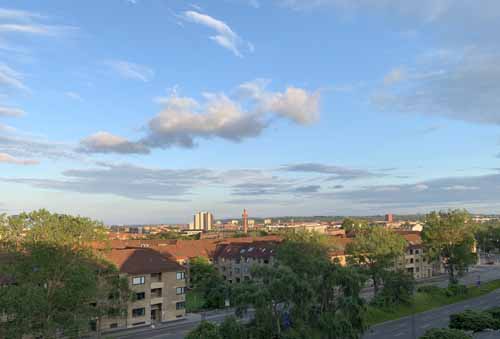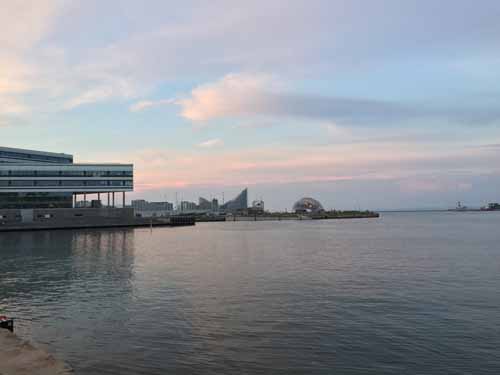The extent of my knowledge of Denmark prior to my arrival was strictly limited to some bold claims stated in a guide to Danish living, generously gifted by my mother shortly before I departed. However, it is only now I have returned that I get the opportunity to reflect upon my actual experiences compared to the expectations suggested in my pocketbook guide to living abroad.
- Denmark is infamously flat, cold and wet
This is of course true apart from the anomaly that is Aarhus, the second largest city in Denmark. Although this coastal region was often subject to extreme wet and windy weather, it didn’t take away from the natural beauty of this clean and green city.
There was a seemingly perfect balance of old, new and nature throughout Aarhus which became more recognisable as I grew more familiar with my surroundings.

A literal stone’s throw away from my accommodation was the magnificent Den Gamle By, a reconstructed village situated the middle of the city’s botanical gardens that represented the progression of Danish architecture throughout historical periods. A short stroll through the gardens would then lead you to the Aros modern art museum, which offered thought provoking exhibitions and an exceptional panoramic view of the city from its 10-story high, circular rainbow skywalk. From this viewpoint a clear contrast along Aarhus’ coastline could be seen, ranging from the steel and brick industrial dockyard at the heart of the city to the Riis Kov forest and beach further along the coast which served as a regular location for sunbathing and BBQing on the surprisingly frequent occasions when the sun would light up the sky late into the evening.

2. Danes strike a hard work-social balance
This is also true; however, it became more evident as I progressed through the year that they were devout followers of work hard, play hard…
The absence of Bachelor level courses for IRP in English meant that the only available option were modules associated with the Masters degree programme. Although this was the most challenging aspect of my time abroad, it was also the most rewarding. I was free to choose from a wide selection of modules which helped to not only expand my knowledge but also take influence from Danish methods of learning. A focus on the development of each student’s understanding through shared reading, discussion and group learning has provided me with relevant experience that I know will be applicable in future academic and work life.
Emphasis must also be made on the social aspect of student life in Aarhus. In a city of approximately 60,000 students, it is hardly surprising that social events were in abundance throughout the year. Student ran weekly “Friday Bars” that occupied each university department were a perfect meeting place for after-class socialising. However, the stand-out occasion was the annual Kapsejlads university boat race with 30,000 students flocking to the University park like migrating birds in the early hours of the morning to drink, party and support competing teams as the races progress throughout the day.

3. Danish people can seem quite withdrawn to strangers
This is something that never resonated with me, I always felt welcome as a temporary Danish resident and only experienced kindness from the people I interacted with throughout the time I was there.
Living with 6 different nationalities whilst also having the opportunity to associate myself with many others from the exchange programme was such a privilege and I can only encourage others to pursue this experience whilst they still can. Not only was I able to expand my understanding of different cultures and political perspectives but also develop friendships with people from around the World that I know will last much longer than the time we spent together in Denmark.
It is only now that I have had chance to reflect upon my time spent in abroad that I realised how fortunate I was to have this opportunity and now I feel responsible for encouraging others so that they can share in my experience.
Leave a Reply